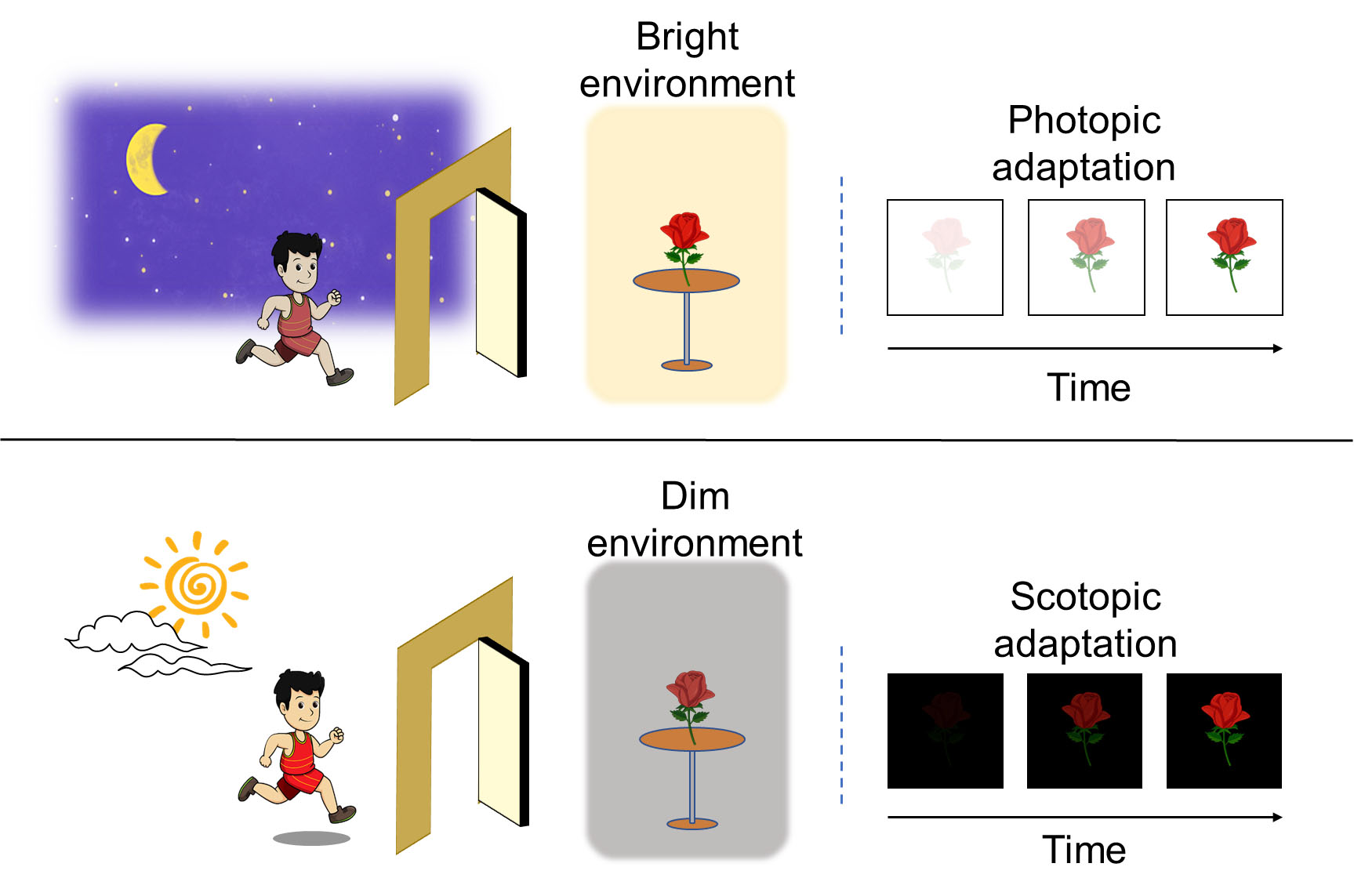| Oct 21, 2023 |
A bioinspired vision sensor based on InP quantum dots/oxide thin-film phototransistors
(Nanowerk News) A research team led by Prof. CAO Hongtao at the Ningbo Institute of Materials Technology and Engineering of the Chinese Academy of Sciences, in cooperation with Prof. ZHANG Haizhong's group from Fuzhou University, has developed a novel bioinspired vision sensor based on InP quantum dots (QDs)/oxide thin-film phototransistors.
|
|
The study was published in Advanced Functional Materials ("InP Quantum Dots Tailored Oxide Thin Film Phototransistor for Bioinspired Visual Adaptation").
|
 |
| Bioinspired visual adaptation to different light intensities of environment. (Image: NIMTE)
|
|
Artificial visual system has a broad application prospect in the security, medical care, service and other fields. However, massive and surging visual data pose a great challenge to the traditional artificial visual system which is trapped by latency and energy consumption problems.
|
|
Adaptive phototransistors play a vital role in improving the efficiency of visual information processing. The researchers embed discrete InP QDs with strong visible-light absorbance within an InSnZnO thin film to construct a hybrid phototransistor, contributing to the efficient carrier transmission between the source and drain.
|
|
The excellent optoelectronic response capability of InP QDs and the superior electrical transport property of oxide semiconductors are perfectly combined in a single device.
|
|
In addition, the developed bioinspired vision sensor based on the InP QDs/oxide thin-film phototransistor exhibits excellent gate controllability and visible light response capability, thus mimicking multiple functions of the human visual system and adapting to varying ambient light intensity.
|
|
Moreover, the device achieved an impressive accuracy of more than 93% for handwritten pattern recognition, indicating its outstanding competence in image processing.
|
|
This study has provided an effective and facile way to fabricate high-performance phototransistors for bioinspired visual adaptation, and shed light on the further development of artificial vision systems.
|

